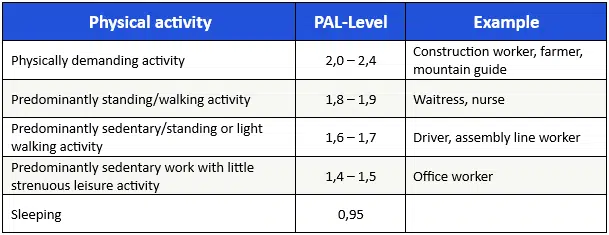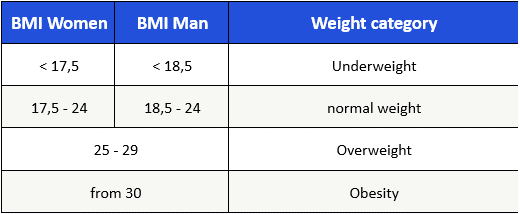A rough guideline for daily calories used to be 2,000 kcal, but this actually only applies to a few people. Our individual calorie needs depend on a number of epigenetic and lifestyle factors. Here you can find out what you need to know to determine your calorie requirements and how you can calculate them. We also explain why BMI is not a solid measure of (un)healthy weight and is often overestimated.
The energy balance - everything in equilibrium?
Energy! We need energy for everything: to breathe, to think, to move, and so on. We absorb this energy through food. If we eat too much, our body stores the excess energy and we gain weight. If, on the other hand, we eat less than we consume, these reserves are used up again. The amount of calories we consume therefore determines our energy balance. How high the calorie requirement of each individual person is depends on various factors that are innate or result from the individual lifestyle.
Factors influencing the calorie requirement
Basic and unchangeable characteristics result from our genetic makeup. For example, gender and age influence calorie requirements. For example, women have a lower percentage of muscle than men, and since muscle consumes more energy than fat tissue, calorie requirements differ between the sexes. Furthermore, age is a decisive factor. In young years, i.e. childhood and adolescence, the body requires more energy for development and growth processes. This also applies to pregnant women. In old age, the processes in the body then run at a slower speed, so that less energy is consumed. This is also one reason why people often gain weight in old age. In addition, exercise and sports play a crucial role. Physically active people burn more calories because of the extra work they do.
Determine the individual calorie requirement
Our total calorie requirement results from the basal metabolic rate and the power metabolic rate. The basal metabolic rate is the amount of energy our body needs at rest to maintain vital processes such as respiration, heartbeat, core temperature, etc. To calculate the basal metabolic rate, the Harris-Benedict formula can be used. With this, the basal metabolic rate can be determined taking into account gender, age, weight as well as height. To take into account the natural differences between men & women, there are two formulas:
Women
Basal Metabolic Rate = 655 + (9.6 × weight in kg) + (1.8 × height in cm) – (4.7 × age in years)
Men
Basal metabolic rate = 66 + (13.7 × weight in kg) + (5 × height in cm) – (6.8 × age in years)
In addition to the basal metabolic rate, there is also the power metabolic rate. This depends on how much and how intensively you move during the day, i.e. how high your physical activity level is, or PAL for short. The physical activity level results from everyday movement and is therefore determined for most people by their occupational activity. However, active leisure activities and sports also play a decisive role.

Once you have determined your basal metabolic rate and the PAL value, you can calculate the calorie requirement for a day by multiplying the two values together. An example based on a 27-year-old woman who is 1.76m tall, weighs 66kg and works as a nurse:
Basal metabolic rate: 665 + (9.6 x 66kg) + (1.8 x 1.76) – (4.7 x 27) = 1,175 kcal
Total calorie requirement: 1,175 kcal x 1.8 (PAL) = 2,115 kcal
Body Mass Index & its limited informative value
The body mass index (BMI) provides information about the ratio of body weight to height and can thus be used to determine overweight or underweight. The formula is as follows: Body weight in kg : height in m squared.
In our example from before, this would be 66 kg : (1.76 m)2 = 21.3
To classify the value, you can follow this table:

Criticism of the BMI
BMI is the most common measure used to determine underweight or overweight, but its validity is limited. Muscle is known to be heavier than fat, so an athletic, well-trained person would be misclassified as overweight because BMI does not differentiate between fat and muscle content. In addition, the health of people classified as overweight or underweight by BMI is not automatically worse than the health of people of normal weight. The distribution of body fat should also be taken into account, because the health risk aspect of overweight is also influenced by where the body fat is located. Body fat in the abdominal region is considered a risk because it increases the risk of cardiovascular disease or even the liver – in contrast to the fat deposits on the hips and thighs.
The BMI provides an initial indication of the ratio of weight to height, but it is not a valid measure of healthy or unhealthy body weight.




